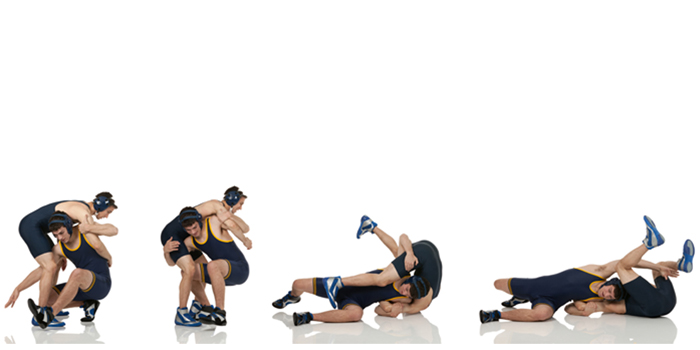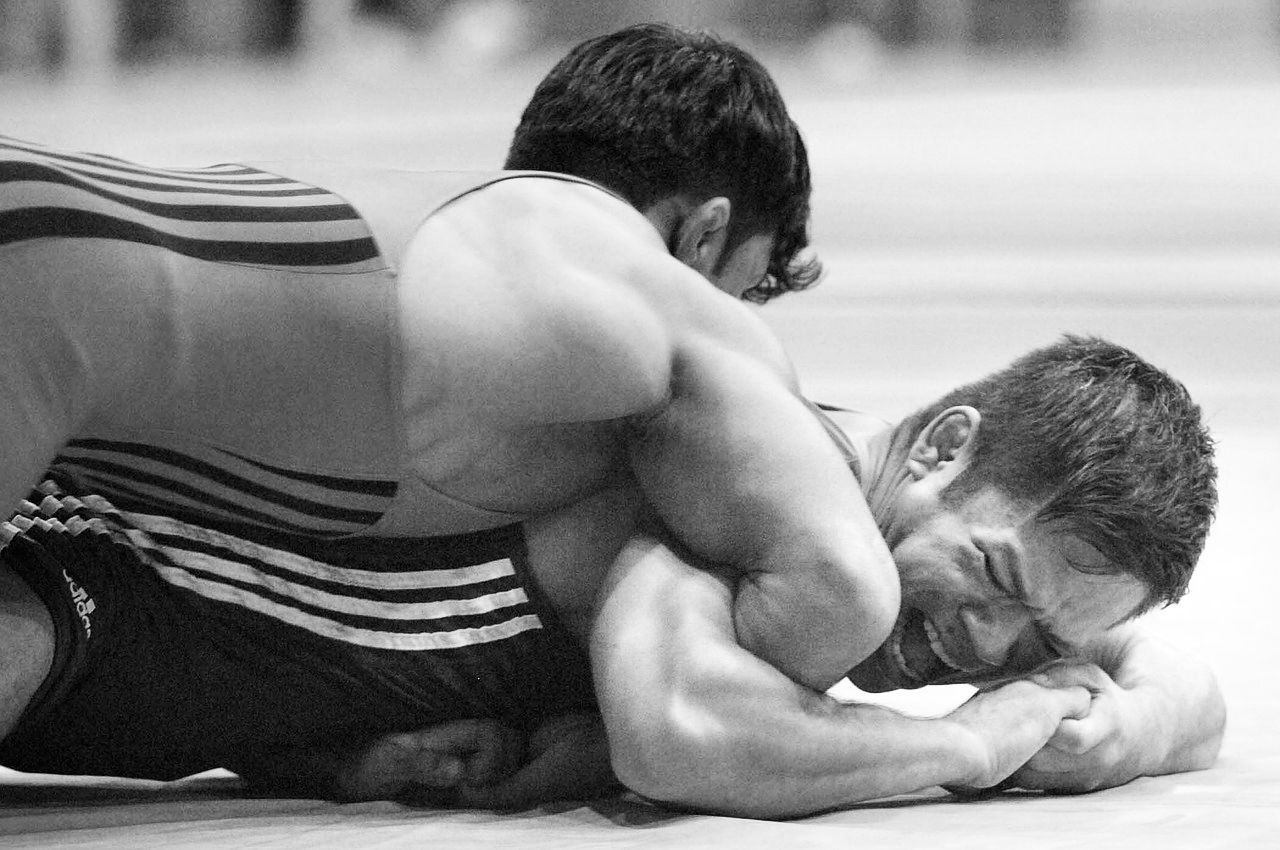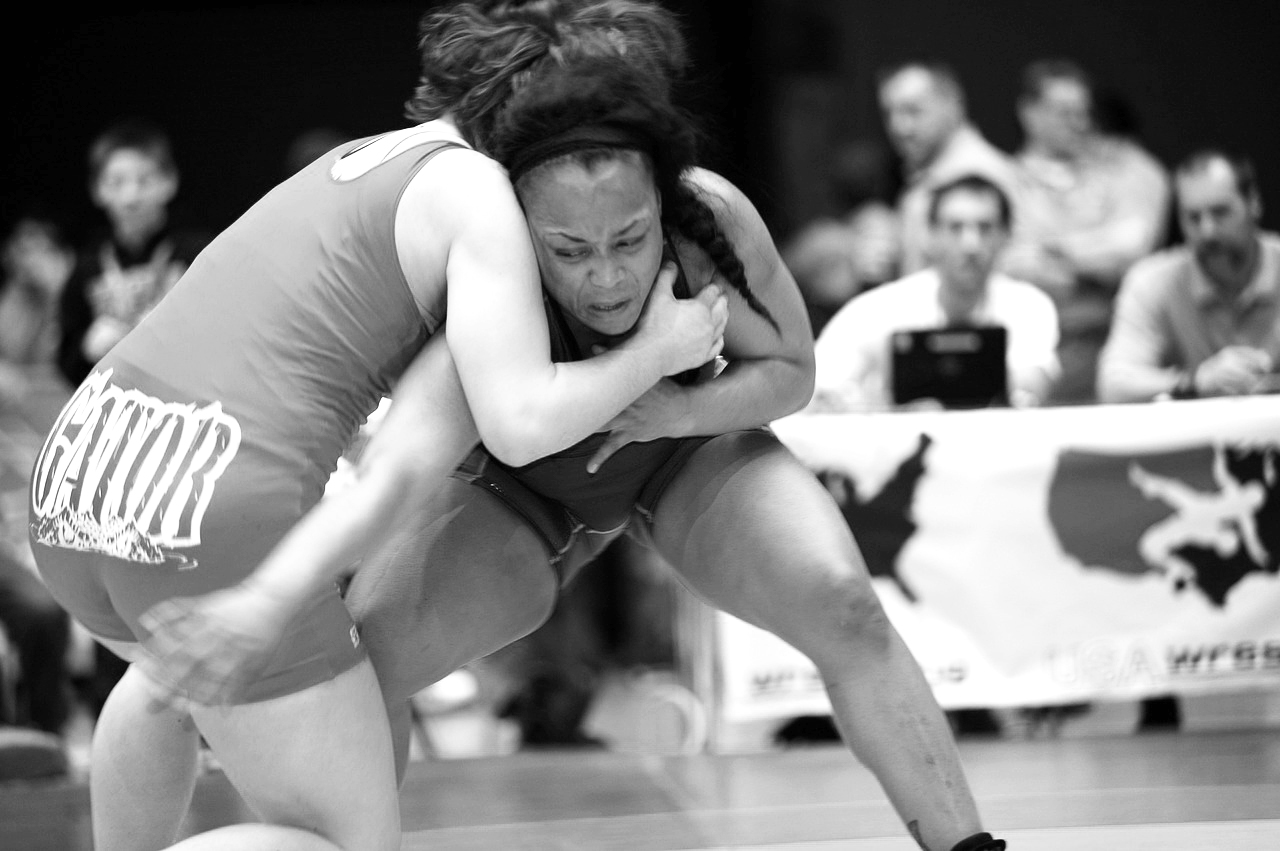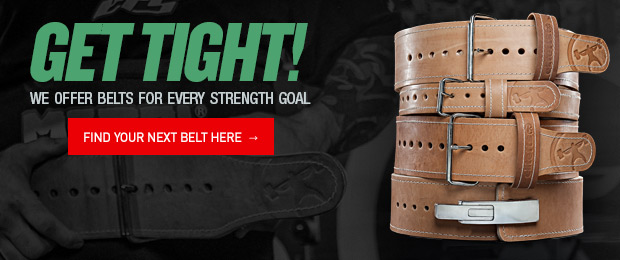
In the sport of wrestling, there’s an ambiguity around the importance of off-mat work and how transferable the development of strength and power can be translated to the mat. More specifically, in the strength and power continuum, where exactly does wrestling fit in? In its simplest form, does muscle endurance matter more than power?
Although this is one of the world’s oldest sports, there is an incredible amount of uncertainty behind how a wrestler should be training when they’re not on the mat. Most can agree that when given a group of wrestlers, there’s definitely more of a broad approach to the athletes strength training, injury prevention, and strength standards opposed to one of football or baseball. However, we can all agree that the requirements for a wrestler are as follows:
- Above Average VO2max.
- High lactate threshold and muscle endurance.
- Ability to produce power under fatigue.
- Agility and coordination.
- Very good mobility.
What am I saying? To wrestle, and have success, one must accept the challenge of being well-conditioned/lean/strong/powerful…all in relation to their size.
It’s safe to say that almost any wrestler (or athlete for that matter that) feels that no form of conditioning prepares them for capacity they must attain besides wrestling (or sport) itself due to the variety built into the sport. To have to react to opponents that are faster, stronger, more skilled, and along with the contact added, makes for finding the best avenues to condition for the sport difficult besides just wrestling. For endurance sports, it allows for coaches to be more predictive of the conditioning level needed to perform. It can be a 400-meter swim, a 400-meter hurdle event, or even the patterned sequence of football that allows averaging a ratio of play duration to rest/transition time; it can be accounted for more accurately than the sport of wrestling. Wrestling falls into the range of a sport more like soccer in that there are bursts of high activity without any real determining factor when it will subside because it depends on the opponent. However, the fatigue will not necessarily come directly from the legs like basketball or soccer. It’s a very real possibility that a wrestlers upper body may begin to fatigue if his opponent is controlling the ties.
RELATED: 4 Essential Qualities of A Badass Wrestler
With that said, there should obviously be a baseline of varied conditioning for wrestler leading up to their preseason that preps their muscle and cardiovascular system for the grueling season ahead. Modalities such as using an Air Dyne bike, swimming, circuits, and terrain sprints would be most preferred outside of actually wrestling. However, the elements that should gain a reasonable amount of attention, is the performance assessment and injury prevention commonly seen in most ball sports. To work on the things that can’t be gained while doing the sport should be the focus of the off-season. Conditioning level, muscle endurance specificity, and skill is gained in the preseason and season of the sport. Focusing on the other demands of the sport on the off-season can allow for a wrestler to improve.
Performance Elements to Build Through Non-Wrestling Training:
Mobility
The full spectrum that leads to comfort in full range of motion joints is what should be addressed. Spending time foam rolling can be very useful to a wrestler because of the amount of muscle strain imposted by a simple practice. Repetitive motion under tension is going to eventually cause tissues to knot and get tight. Next, using band for the use of banded distraction will allow for full range of motion to be met at the joint even when having tight muscles.
Having tight ankles or hips can prevent for maximal power output in most movements and when in a one-on-one competition, the athlete can’t afford to have power leaks. Another application is for when the athlete inevitably gets in a bad position, this can help get the athlete back into good position. The other obviously use for that time spent on the band would be for flexibility. After the foam rolling has been done, and some banded distraction has cleared the joint capsule, this is where the band can become of use to stretch the muscle groups surrounding the joints. Mobility will certainly be addressed through the warm up and drills throughout practice. Nevertheless, this will only help for the sticky situations that are bound to occur over a season. The mobility required for this sport demand is almost limitless. Full range of motion should be the minimum requirement in all joints.
Power
For this sport, there’s a demand of being able to have a burst of power at any point of the match. This would only suggest that it would be beneficial for any athlete to build a high capacity for power and speed. Power elements are seen in both an offensive and defensive factors of the match and at any point. This could be trying to score a late takedown for a win or a quick escape. The common patterns (much like many sports) where you see power displayed is possibly through a compound hip and knee extension (be it single leg or double) possibly in the vertical or horizontal plane. This is also true for a power rotation (such as a throw) movement. With this simplistic view at hand:, it’s quite apparent that wrestlers should be doing these same things seen in as the common ball sports. Going a step further, it is a strength coach’s job to relay the importance to the coach for wrestlers to have some strength standards because of the sport requiring weight classes. Absolute strength is a major factor in any sport because it allows your athlete to be able to possibly explosive than their opponent or to outpower them. This breeds the opportunity for the playing ground to be leveled in some situations.
Training that should be considered and adopted into off-season training:
Sled Pushes: Loaded to different weight according to their weight. Body weight load for speed, and 1.5-2x bodyweight for strength. Understanding how to put force into the ground comes in handy when trying to create offense.
MORE: Should Athletes Powerlift in the Off-Season?
1RM Standards: More absolute strength that can be transferred to the skill of the sport makes for a more dangerous athlete. It’s up to the strength and wrestling coaches to agree and define what relates more to the program just like any other sport, but here are some standards one can consider as a starting spot.
- Clean (or Clean High Pull): 1.5x Bodyweight/1.2x Bodyweight for HVYweights
- Squat: 2x Bodyweight/1.85 Bodyweight for HVYweights
- Bench: 1.5x Bodyweight
- Pull-ups: (In 90 sec) 30+/ 15+ for HVYweights
Bodyweight repetitions while maintaining the integrity of mechanics in 90 seconds for the squat and bench is something to be considered as well. This includes “Hang High Pull” reps in 90 seconds at bodyweight possibility under the same stipulations of exercise integrity. The moment it gets out of your standard for mechanics, the athlete is finished.
- Medball Throws: Rotational heaves, and underhand heaves. These movements can be responsible for getting your athlete to understand how speed relates to power, and ultimately force.
- Jumps: Broad jumps and single-leg bounds. Being able to be explosive in a horizontal plane in a variety of ways.
- Adductors/Arm Strength: Hip adductors, transverse adductors (pectoralis major and minor/latissimus dorsi/coracobrachialis) biceps, and triceps. These are the major groups that are under thanked but responsible for controlling your opponents’ limbs and torso.
Agility
Being able to move quickly, with power, and with preciseness in tight quarters is something that I believe needs to be worked on to get really good on. As earlier stated with conditioning, no agility training is going to relate to the sport more than actually playing the sport itself; however, there are principles and movement patterns that can be learned to translate into competition. Simple things like agility ladder work can teach the athlete quickness and how NOT to get their feet tied up while moving. I see the same positive benefits in the sport of wrestlers to teach the athlete how to remain light and quick on their feet while moving linearly, laterally, and while having to rotate the hips to re-position.
Justin Porter, CSCS, earned a Bachelor’s degree in Health Sciences and a Master's in Exercise Science from Cleveland State University. Justin is the co-owner and Head Programmer of Functional Fitness Applied Strength & Conditioning located in Cleveland, OH. Currently he combines efforts with his older brother, Jermail Porter, providing programming and training for all members of their gym as well as various area athletes and teams. He is the co-author of 'Wresting Strong' & 'Football Strong' training manuals. For more information, visit www.wrestlingstrong.com.












1 Comment